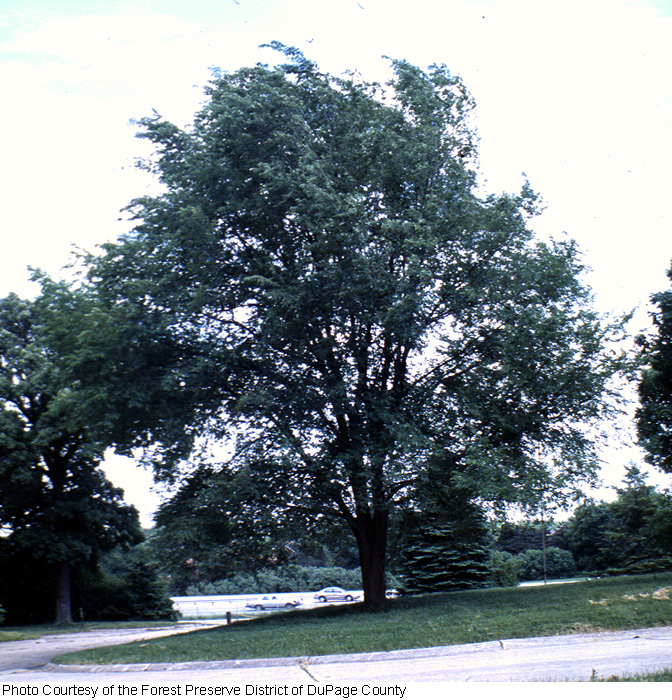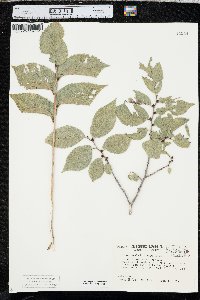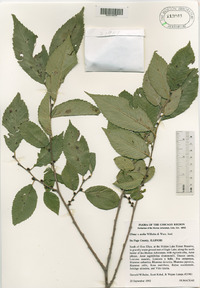
|
|
|
|
Family: Ulmaceae
|
Tree to 20 m tall Leaves: alternate, stalked, dark green and usually rough above, paler beneath, 5 - 12 cm long, 3 - 6.5 cm wide, mostly double-toothed, and elliptical with a mostly symmetrical base and pointed tip. Flowers: in drooping clusters, short-stalked, small. Fruit: single-seeded, winged (samara), short-stalked, nearly round. Bark: reddish or dark reddish brown and fissured. Twigs: grayish brown. Buds: reddish brown, short, rounded, and blunt. Middle scales fringed with white hairs. Terminal scales fringed with reddish brown hairs. Similar species: Characteristics of Ulmus x notha are intermediate between the parents. The most distinctive features are the middle bud scales fringed with white hairs and the terminal bud scales fringed with reddish brown hairs. It differs from its parent U. pumila by having the middle bud scales fringed with white hairs and more pointed leaves. It differs from the other parent U. rubra by lacking stiff hairs on the leafstalks and by having nearly symmetrical leaf bases. Flowering: April Habitat and ecology: Common in the western suburbs of Chicago, where Ulmus pumila is commonly planted and grows as an escape. It has been found in woodland edges, fields, degraded fens, razed homesites, gravelly waste ground, and along lakes and streams. Occurence in the Chicago region: non-native Notes: Ulmus x notha can produce viable seed and backcross with either of its parents. This elm, as well as all native elm species, is susceptible to Dutch elm disease and phloem necrosis. See link to Dutch elm disease below. Etymology: Ulmus is the Latin word for elm. Author: The Morton Arboretum |






